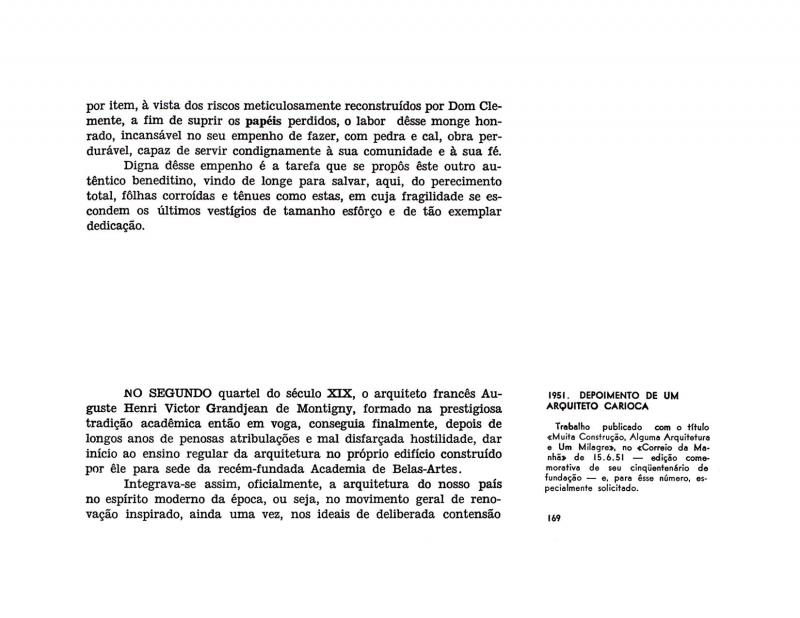In his Pilot Plan report, Lúcio Costa lists the main points of his urban design proposal for the new capital city of Brazil. This is an article of great importance that contributes a great deal to the understanding of Brazilian modern architecture and the country’s urban development. The city of Brasilia represented the ultimate expression of Brazilian constructive utopias, and would also become the critical reason for this proposal. There are two essential documents that should be read in order to fully grasp the nature of the opposing forces at that historic point in time. Firstly, the Congresso Extraordinário de Críticos de Arte (Brasilia/ São Paulo/ Rio de Janeiro, September 1959) whose theme: “A cidade nova: síntese das artes,” was proposed by the critic Mário Pedrosa. His essay, “Cidade Nova,” which shed considerable light on that particular period, was published in the anthology of his work that was collected by Otilia Arantes, Volume 3, Acadêmicos e Modernos (Sao Paulo: EDUSP, 1998, pp. 411-21). Secondly, the Anais do Congresso Extraordinário de Críticos de Arte.
In regard to the debate on the subject of modern architecture, there is a controversial article by Costa, “Depoimento de um arquiteto carioca,” in which he discusses Le Corbusier’s visit to Brazil in 1929, his urban design proposal for the city of Rio de Janeiro, and what he described as the opposing, “crazy,” and non-Brazilian reaction [see doc. no. 1110348]. The pilot plan for Brasilia emerged from this background.

